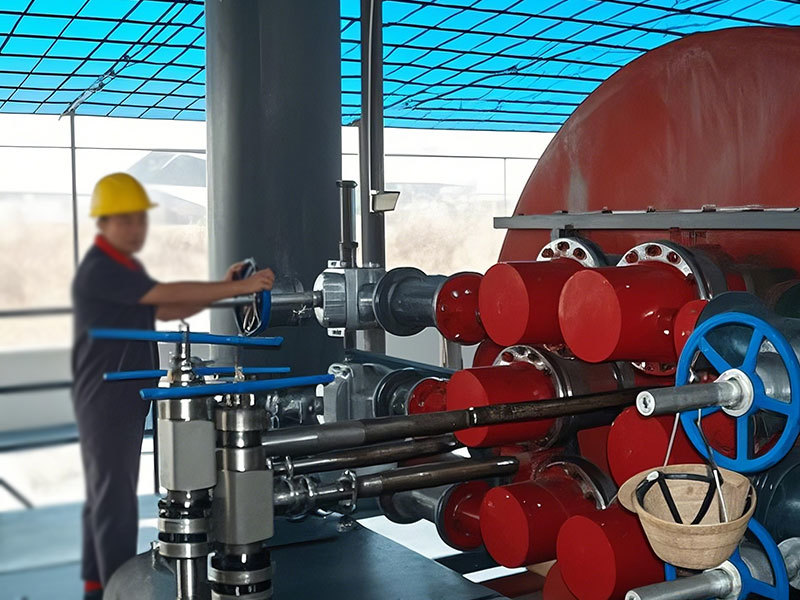Exploring the Latest Innovations in Sodium Polyphosphate
2025-06-05
Sodium polyphosphate is a fascinating chemical compound that has garnered increasing interest in a variety of applications across several industries. As one of the newest innovations in biochemistry, it serves as a vital ingredient in many processes, particularly in water treatment, food processing, and even in the production of household cleaning products. This article aims to provide a comprehen

Sodium polyphosphate is a fascinating chemical compound that has garnered increasing interest in a variety of applications across several industries. As one of the newest innovations in biochemistry, it serves as a vital ingredient in many processes, particularly in water treatment, food processing, and even in the production of household cleaning products. This article aims to provide a comprehensive overview of sodium polyphosphate, highlighting its significance and the latest advancements in this area.
One of the primary uses of sodium polyphosphate is in water treatment, where it acts as a sequestrant and helps to prevent scale formation. By binding to metal ions, it effectively inhibits the precipitation of insoluble salts, thereby enhancing the efficiency of the water treatment process. The newest formulations of sodium polyphosphate are being designed to improve solubility and stability, making them more effective in a wider range of conditions.
In the food industry, sodium polyphosphate is commonly utilized as a preservative and texture-enhancing agent. It helps maintain moisture in food products, improving their quality and shelf life. Recent advancements have led to the development of food-grade sodium polyphosphate that meets stringent safety standards, ensuring that it is suitable for various food applications without compromising nutritional value.
Moreover, sodium polyphosphate has found its place in the realm of cleaning products. Its ability to soften water and enhance the performance of surfactants makes it a popular choice in formulations for laundry detergents and household cleaners. The latest innovations focus on creating more environmentally friendly versions that reduce potential ecological impacts while maintaining effectiveness.
Research into sodium polyphosphate is ongoing, with scientists exploring new methods to enhance its properties further. For instance, the development of nano-sized sodium polyphosphate particles is showing promise in increasing reactivity and improving performance in various applications. These advancements could lead to more efficient processes, reducing resource consumption and production costs.
In summary, the newest innovations in sodium polyphosphate underline its versatility and significance across multiple industries. Whether in water treatment, food preservation, or cleaning applications, sodium polyphosphate continues to evolve, offering enhanced performance and safety. Its ongoing development promises to bring about even more exciting applications, solidifying its place as a crucial component in the field of biochemistry. Understanding these advancements can help industries make informed decisions about incorporating sodium polyphosphate into their processes, ultimately leading to improved outcomes in their respective fields.
One of the primary uses of sodium polyphosphate is in water treatment, where it acts as a sequestrant and helps to prevent scale formation. By binding to metal ions, it effectively inhibits the precipitation of insoluble salts, thereby enhancing the efficiency of the water treatment process. The newest formulations of sodium polyphosphate are being designed to improve solubility and stability, making them more effective in a wider range of conditions.
In the food industry, sodium polyphosphate is commonly utilized as a preservative and texture-enhancing agent. It helps maintain moisture in food products, improving their quality and shelf life. Recent advancements have led to the development of food-grade sodium polyphosphate that meets stringent safety standards, ensuring that it is suitable for various food applications without compromising nutritional value.
Moreover, sodium polyphosphate has found its place in the realm of cleaning products. Its ability to soften water and enhance the performance of surfactants makes it a popular choice in formulations for laundry detergents and household cleaners. The latest innovations focus on creating more environmentally friendly versions that reduce potential ecological impacts while maintaining effectiveness.
Research into sodium polyphosphate is ongoing, with scientists exploring new methods to enhance its properties further. For instance, the development of nano-sized sodium polyphosphate particles is showing promise in increasing reactivity and improving performance in various applications. These advancements could lead to more efficient processes, reducing resource consumption and production costs.
In summary, the newest innovations in sodium polyphosphate underline its versatility and significance across multiple industries. Whether in water treatment, food preservation, or cleaning applications, sodium polyphosphate continues to evolve, offering enhanced performance and safety. Its ongoing development promises to bring about even more exciting applications, solidifying its place as a crucial component in the field of biochemistry. Understanding these advancements can help industries make informed decisions about incorporating sodium polyphosphate into their processes, ultimately leading to improved outcomes in their respective fields.


 TESFA STPP
TESFA STPP